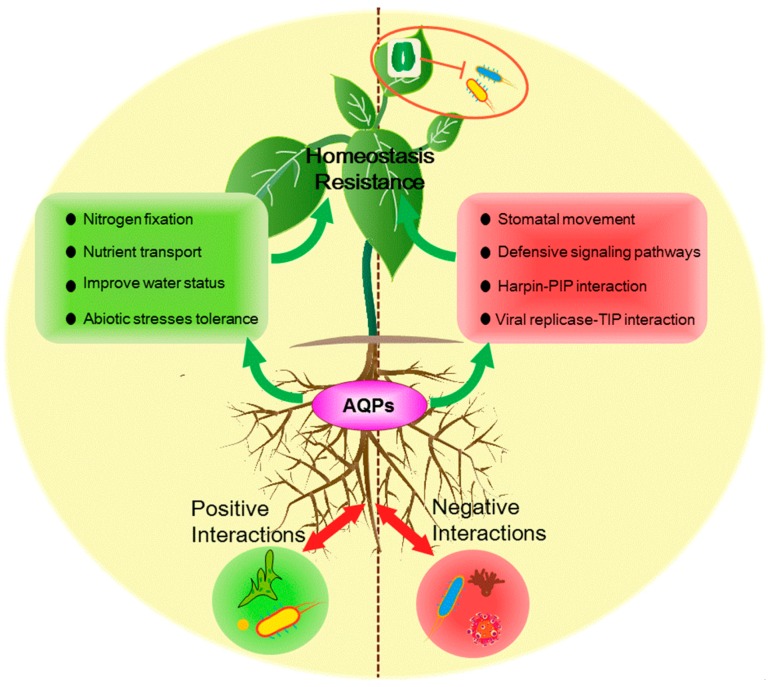Figure 4.
AQPs’ currently established positive roles in different pathways on plants in both positive and negative plant–microbe interactions. For positive plant–microbe interactions, AQPs mainly transport water and other physiological substances to maintain relative water content and leaf water potential by regulating specific AQP gene expression and activity under specific growth conditions. For negative plant–microbe interactions, AQPs use signaling in guard cells to adjust stomata and can interact with pathogen effectors or replicase, and can also induce resistance of plants by H2O2 signaling.

